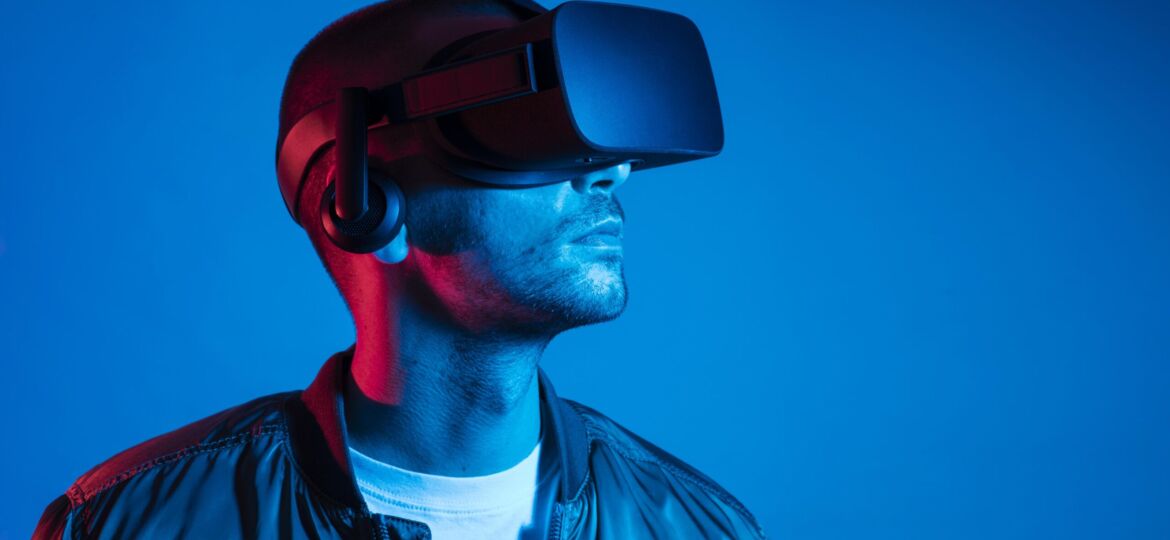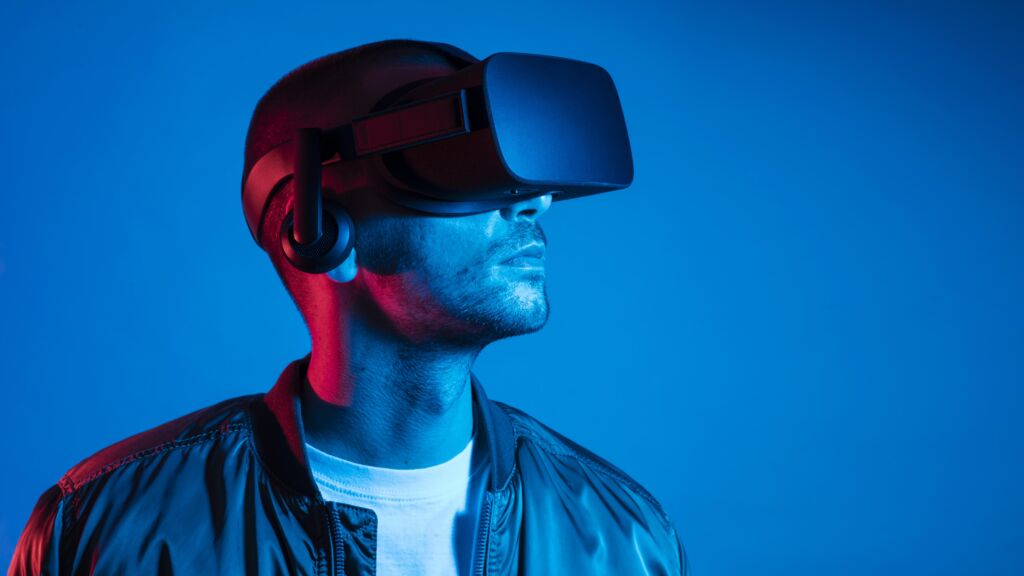
Virtual reality can feel far away, too futuristic. Probably a term that takes you to movies like “Minority Report” or “Ready Player One”.
However, this technology is already being developed. Moreover, its applications are revolutionizing many markets. Without a doubt, virtual reality is here to stay!
In this article, you will see:
What is virtual reality; how can you distingue virtual reality from augmented reality; what are the applications of virtual reality today; what can we expect for the future of this technology.
Prepared? So let’s get to know this new reality!
What is virtual reality?
Virtual Reality (VR) is a form of environment created by computers capable of simulating a reality. In other words, the user participates in a program that creates scenes and objects that look real. This makes for a feeling of immersion in this digital landscape.
In this sense, virtual reality provides us with several possibilities of use, such as:
- Have an immersive experience in a video game;
- Perform a simulation of a surgery;
- Improve your sports skills in personalized training simulations;
- Learn in a more intuitive and immersive way;
- And much more.
Although these examples seem too futuristic, virtual reality is not current.
In fact, many consider that the first virtual reality service began with Sensorama. This program dates from 1950 and worked as a machine with a built-in seat to watch 3D movies with odor and vibration simulators that characterized a specific scene.
As expected, over time, this technology has evolved into programs with more modern and more functional interfaces, as we will see throughout the article.
Virtual reality vs Augmented reality
As much as virtual reality was generated decades ago, many people are still not familiar with this technology. In addition, it is also often confused with augmented reality. In this topic, we will see the difference between these two technologies.
Virtual reality, as we have seen, is an artificial scenario created so that the user can use it in an immersive way. To be able to experience this “virtual world” you need some kind of equipment, such as a headset or VR glasses.
In contrast, augmented reality works as an extension of our reality. This is, elements can be created to complete the world we live in. An example of this are apps that connect with your smartphone’s camera to create an extended reality, like pokémon go.
Another possibility is the use of these two realities in a mixed way, or mix reality, as it is called. In this case, it would be possible to create fictitious goals in the real world, creating a context in which the virtual world and the physical (real) world would be practically indistinguishable.
Virtual reality applications

Now that you understand what virtual reality is, the question remains… What are its applications today? How does this technology help us in practice?
There are many areas that benefit from VR: culture, medicine, science, sports, tourism, etc. From simulating a surgery to visiting specific places in an immersive way, virtual reality creates ways to bring out our imagination, our experience and our learning.
Check out some uses of VR in specific areas below:
Dining
Currently, we can take virtual trips and taste specific dishes from these places. Imagine visiting Greece or India while sampling the local food…
Medicine
VR is used in medicine to simulate surgery, create possible scenarios that could treat certain diseases, simulate the construction of prostheses, etc. In fact, Spain’s National Research Council was successful in reducing the effects of Parkinson’s without some patients after using virtual reality technology.
Media
Journalism, TV and social media events use virtual reality to create immersive environments for lectures, debates, streaming, etc.
Education
VR is also present in education. This technology can create immersive lessons that help the student retain more information as well as help students with learning difficulties. Imagine taking a class on the Industrial Revolution while it is possible to follow the evolution of this period in an artificial and totally immersive scenario of that time.
Entertainment
With VR, it is possible to go through increasingly real experiences in video games, movies and series, even without leaving the couch.
Architecture
In architecture, virtual reality helps architects visualize the project in more detail. In addition, it makes the presentation of ideas easier for customers to understand.
industries
Industries can use VR to test, create and optimize products before producing them in the real world. With this, companies would save more time, money, materials and efforts.
Art and culture
Some museums and galleries are starting to offer virtual tours. In them, the visitor will be able to see works of art as if they were in a physical space. In addition, it is possible to create immersive and interactive environments, making the work impact the viewer even more.
Military service
Finally, virtual reality can be used in the military to simulate combat to train soldiers.
What to expect for the future?
After all, what can we expect for the future of virtual reality?
In numerical terms, investments in virtual reality and augmented reality have increased by 21 times in the last 4 years. In 2022, around 15.5 billion euros were used towards the development of these technologies.
For the future, we hope to see the growth of VR in other areas as well as its technological development. In addition, it is expected that technology can ally itself with artificial intelligence to create increasingly optimized and functional simulations and scenarios.
In addition, numerous companies are in the race to develop equipment that provides a better experience in virtual environments. The creation of Oculus by Meta is an example of this.
Over the years, it will be possible to see devices capable of producing odors, tastes, touches, as well as images and sounds with better qualities.
So, we come to the end of this article. If you liked this theme, take the opportunity to read our blog! There, you’ll find other articles covering the future of technology and design.
